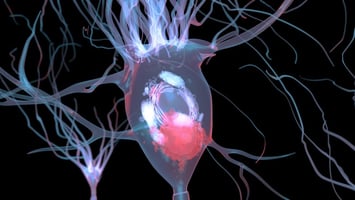Childhood TBI Increases Risk of ADHD for Several Years
 |
These findings “suggest that physicians and other clinicians should continue to be vigilant in monitoring attention problems in patients with a history of brain injury, even if it has been a number of years since the injury, the injury was moderate in nature, or the patient experienced a predominantly positive recovery,” wrote Megan Narad, Ph.D., of Cincinnati Children’s Hospital Medical Center and colleagues. This vigilance will aid in more timely identification of SADHD cases, the authors continued, which could reduce the functional impairments these children may face.
Narad and her team enrolled 187 children between the ages of 3 and 7 who were hospitalized overnight with either a TBI (81 children) or an orthopedic injury (106 children; the control group). All participants were periodically assessed for SADHD until they reached middle school. The final assessments took place an average of 6.8 years after the initial injury.
Of the 187 children, 48 (25.7%) met the researchers’ definition of SADHD by the study’s end. These included 13 children with severe TBI at enrollment, 6 with moderate TBI, 13 with complicated mild TBI, and 16 with an orthopedic injury. Almost half of the children with TBI who later developed SADHD (15 of 32) did so more than one year after their injury.
An analysis of these outcomes revealed a 3.62-fold increased risk of SADHD among children with severe TBI compared with children with an orthopedic injury. Children with mild or moderate TBI had about a 1.7-fold increased risk of SADHD, but these data were not statistically significant. The authors also found that among children with TBI, family dysfunction was associated with a statistically significant 4.24-fold increased risk of SADHD.
“Findings about the association of family functioning with the development of attention problems after TBI also support previous research highlighting the importance of allocating resources to the injured child’s family throughout recovery,” Narad and colleagues concluded. “Assessing family functioning, identifying families at risk, and developing programs to promote healthy family functioning to foster positive outcomes should be integrated into clinical practice when working with patients and families with a history of TBI.”
To read more about TBI, see the Psychiatric News article “FDA Clears the Way for First Blood Test to Evaluate Head Injuries.”
(shutterstock/Lightspring)






